Quantifying the influence of global warming on unprecedented extreme climate events
- PMID: 28439005
- PMCID: PMC5441735
- DOI: 10.1073/pnas.1618082114
Quantifying the influence of global warming on unprecedented extreme climate events
Abstract
Efforts to understand the influence of historical global warming on individual extreme climate events have increased over the past decade. However, despite substantial progress, events that are unprecedented in the local observational record remain a persistent challenge. Leveraging observations and a large climate model ensemble, we quantify uncertainty in the influence of global warming on the severity and probability of the historically hottest month, hottest day, driest year, and wettest 5-d period for different areas of the globe. We find that historical warming has increased the severity and probability of the hottest month and hottest day of the year at >80% of the available observational area. Our framework also suggests that the historical climate forcing has increased the probability of the driest year and wettest 5-d period at 57% and 41% of the observed area, respectively, although we note important caveats. For the most protracted hot and dry events, the strongest and most widespread contributions of anthropogenic climate forcing occur in the tropics, including increases in probability of at least a factor of 4 for the hottest month and at least a factor of 2 for the driest year. We also demonstrate the ability of our framework to systematically evaluate the role of dynamic and thermodynamic factors such as atmospheric circulation patterns and atmospheric water vapor, and find extremely high statistical confidence that anthropogenic forcing increased the probability of record-low Arctic sea ice extent.
Keywords: climate change; climate extremes; event attribution; global warming.
Conflict of interest statement
The authors declare no conflict of interest.
Figures

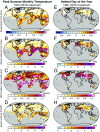

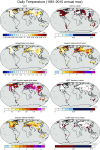
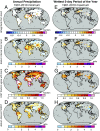
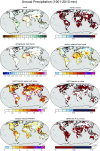
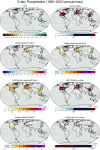



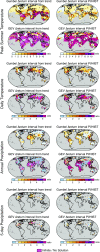

References
-
- Trenberth KE. Framing the way to relate climate extremes to climate change. Clim Change. 2012;115:283–290.
-
- Trenberth KE, Fasullo JT, Shepherd TG. Attribution of climate extreme events. Nat Clim Change. 2015;5:725–730.
-
- Shepherd TG. A common framework for approaches to extreme event attribution. Curr Clim Change Reports. 2016;2:28–38.
-
- National Academies of Sciences, Engineering, and Medicine . Attribution of Extreme Weather Events in the Context of Climate Change. Natl Acad Press; Washington, DC: 2016.
Publication types
MeSH terms
LinkOut - more resources
Full Text Sources
Other Literature Sources
Molecular Biology Databases
Miscellaneous

